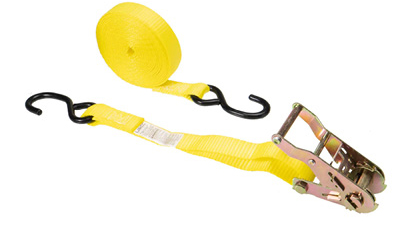Tiedown rings
Protection for your aircraft

Each airport you visit will probably have different tiedown methods and each one comes with its own set of best practices when taxiing, parking, and securing the airplane.
Typical aircraft have three tiedown rings, located at the tail section of the aircraft and on the wings, either on the aircraft strut or attached directly to
the underside of the wing.
On an aircraft ramp, the parking spot will normally have three anchor rings attached to the pavement that will align with the rings on the aircraft. Be careful not to over-tighten the chain, rope, or strap, as it can over-stress the strap and anchor points on the aircraft.

CHAIN, ROPE, OR NYLON?
When visiting other airports, you may not have much choice in what tiedowns are available to you, so it’s helpful to be prepared for any scenario.

Ropes have the shortest lifespan as they are more susceptible to rot than nylon ratchet straps and require you to have knowledge of tying secure knots. Most pilots use the double locking half hitch or bowline knot, which can easily be learned online.

Nylon ratchet straps typically have hooks on the end that easily attach to the aircraft tiedown rings and the ratchet component makes tightening the strap easy, but they tend to rust and be hard to use after a few years in the elements.

Chains will either have an S-hook on the chain to attach to the ring on the aircraft and another hook on the end that attaches to itself or just one S-hook on the end. When using the latter, the chain is drawn through the ring and then the S-hook attaches to itself. It’s recommended to push a link through another link, then repeat, then secure the S-hook to that link.



